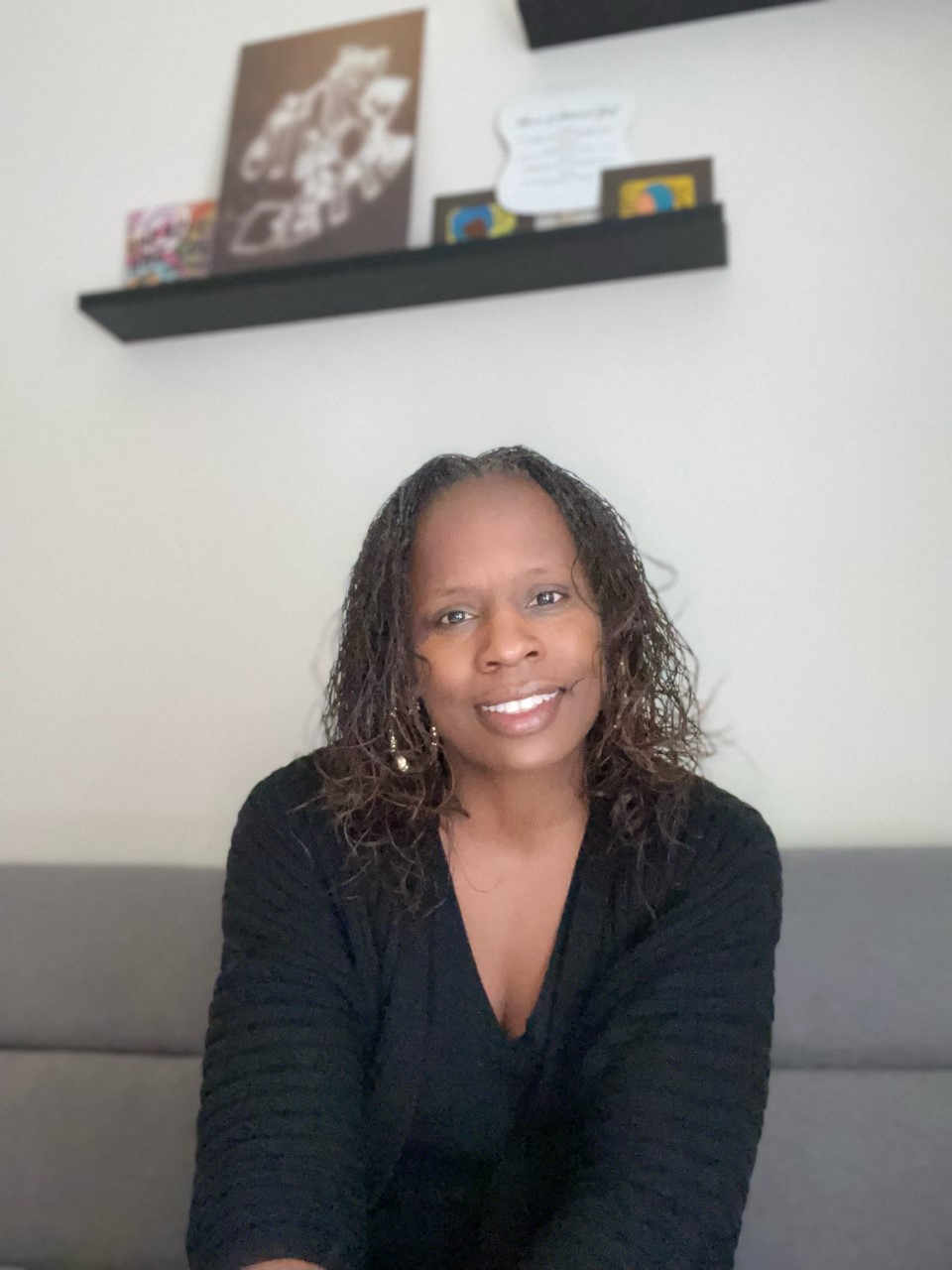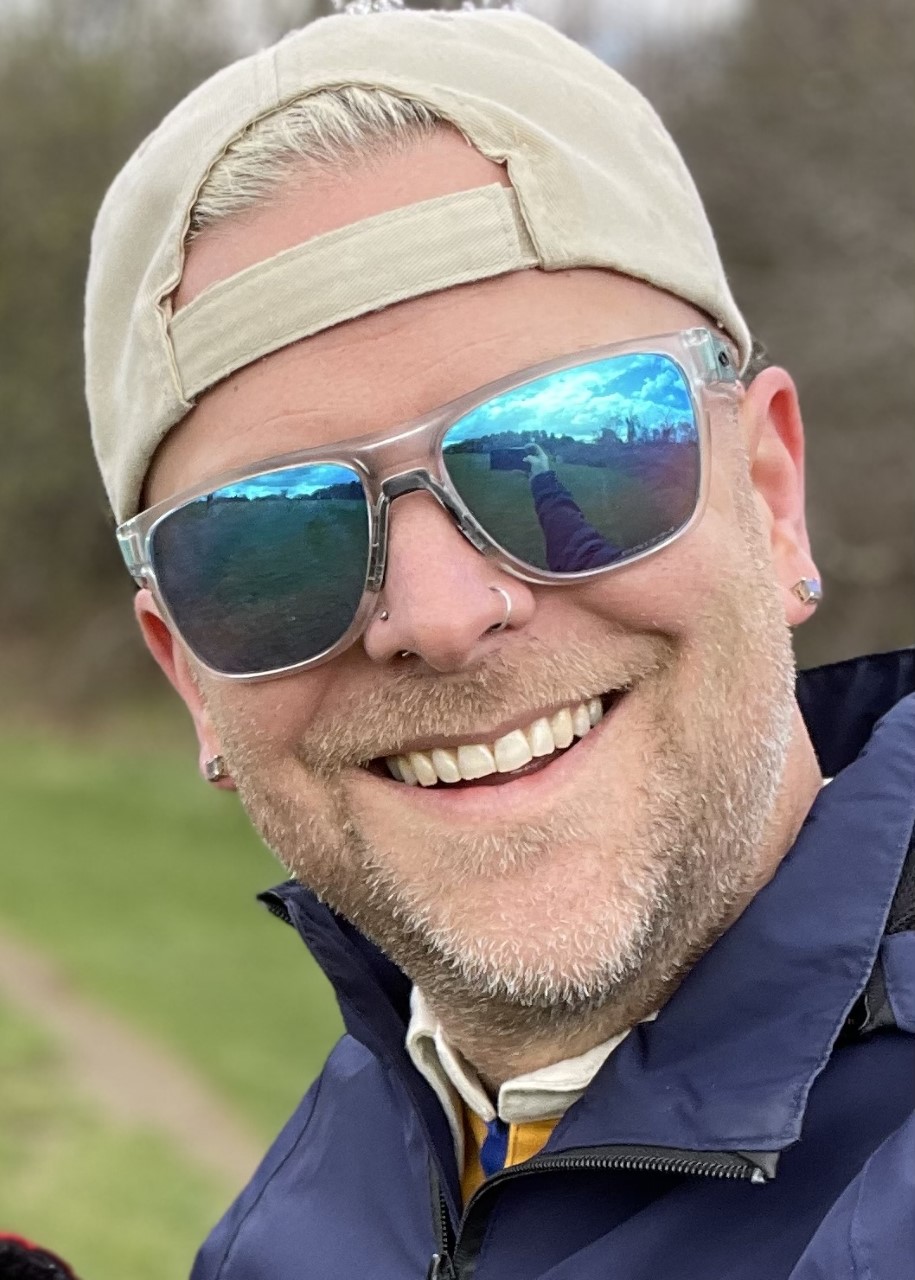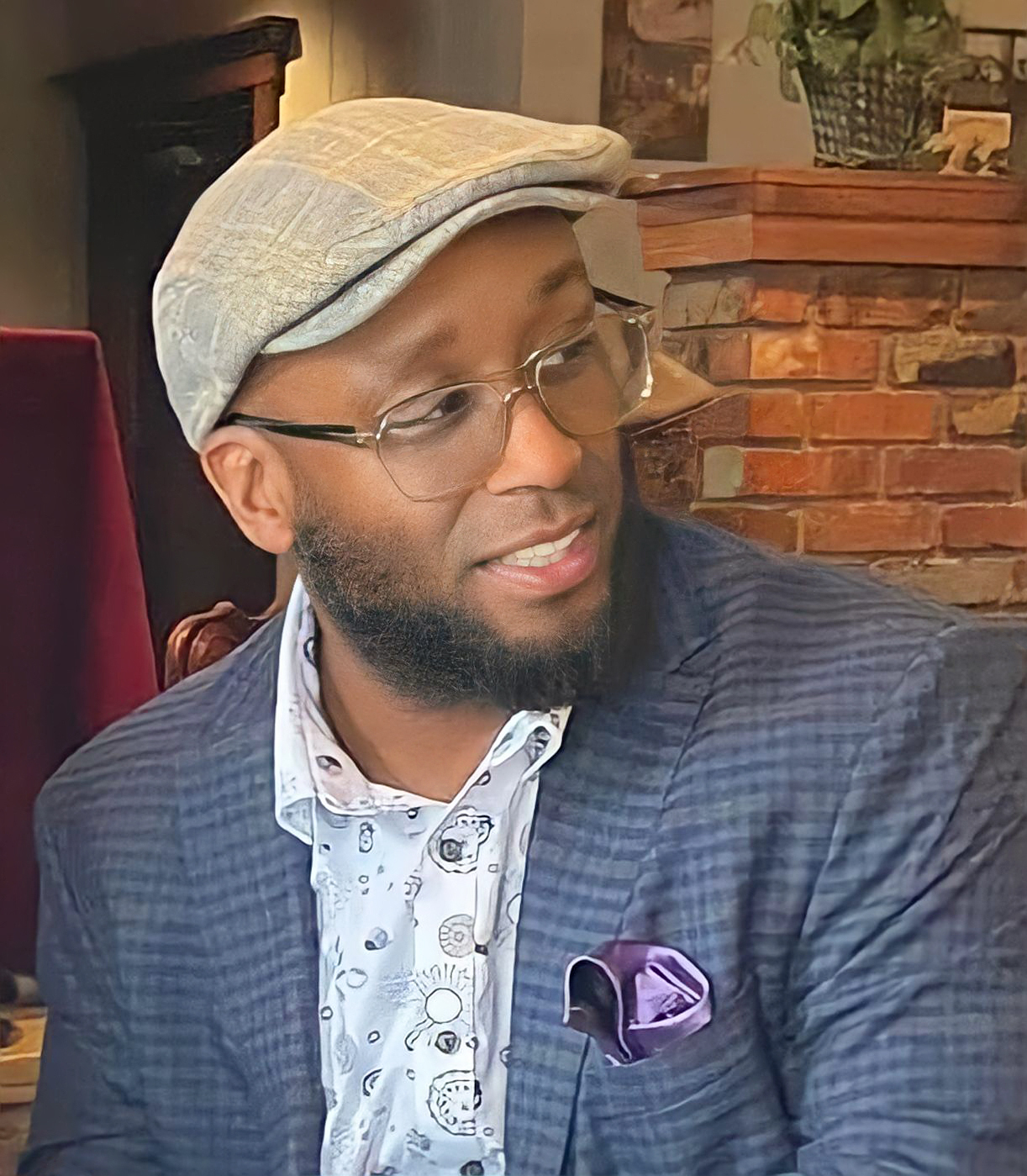Episode Transcript
[00:00:00] Speaker A: Sam.
[00:00:39] Speaker B: Hello and welcome to JCELL Jabber.
My name is Ian Mehta, I use he him pronouns and I'm an Associate professor of Educational Leadership and Policy at the University at Buffalo and I'm a board member of the Journal of Cases in Educational Leadership.
JCELL publishes peer reviewed cases for educational leaders who are in preparation programs as well as for practitioners who want to connect theory to practice as part of professional development efforts.
The journal is available online and the goal of JCEL is to help educational leaders create more equitable learning experiences for communities across the globe. Each case has a narrative, teaching notes, discussion questions, and learning activities for educational leaders to consider.
JCEL Jabber is a way to help educators consider how one of the cases from JCEL could be used to support learning for leadership.
JCEL Jabber is also a quarterly podcast that helps highlight special collections of articles that are temporarily made available for free to increase access around issues of inequities that exist in school systems.
[00:01:52] Speaker A: And My name is Curtis Brewer. I'm a Professor at the University of Texas at San Antonio.
I am a co editor of the Journal of Cases of educational leadership, or JCEL.
With this podcast we provide listeners with a brief, 45 minute way to engage or more deeply deal with a case and hear a nuanced analysis of the issue. The podcast also connects the listener with the authority who provides additional details about the case and provides a discussion with a scholar or practitioner from the field.
In this episode, we reviewed Tania's Paredes case titled Sidelining Trauma Sensitive Practice in Schools and Next Steps.
This case was published in December of 2021 and addresses how students who experience complex traumas often experience disproportionately higher rates of suspension and expulsion. At the heart of this case is the importance of how educators can provide assistance and guidance to students who experience trauma in their lives and how that can lead to greater equity in terms of access and opportunity to achieve educational success.
[00:03:05] Speaker B: So to set the stage for this case and for the listener to hear from the author, we wanted to review how school systems can better respond to students who have experienced trauma in their lives.
And before we go any further, we do want to make it clear to the listener that the topics covered in this podcast might be considered triggering to some people. In this specific podcast, we're going to be talking about a variety of traumas people might experience, including physical, sexual and emotional abuse. If you as a listener have experienced any of these, please be aware that the topics we discuss might be triggering and that if the discussion of these topics has been difficult for you to listen to in the past. This particular jcell Jabber podcast might not be the best for you and you might want to stop the podcast at this point.
So for those of you still with us, the National Child Traumatic Stress Network defines trauma as, quote, a frightening, dangerous or violent event that poses a threat to of life or bodily integrity, end quote and can include but is not limited to incarceration of a parent or guardian, witnessing or subjection to domestic abuse or sexual abuse.
Trauma can become layered and complex when it occurs repeatedly and over the course of months or years, which the trauma then becomes manifested through behavior, cognitive development and impairment, and even the access to education because of neurological development and how that becomes distorted and secondary to survival mechanisms that take precedent in the U.S. the individuals with Disabilities Education act, more commonly known as idea, states that students can receive intervention with proper documentation of exposure to various traumas.
As such, IEPs and 504 plans can include accommodations to ensure children are considered given access to equal opportunities in the general education setting.
In other words, students with that proper documentation through their IEP or 504Plan have legal protections to ensure proper accommodations are provided to students who have experienced trauma.
In communities that experience rates of people experiencing poverty, fewer resources exist within the community and the education system to support children in the same manner that counterparts in high income communities experience.
And right before I turn it back over to Curtis, I should note that children in low income communities often are disproportionately people of color and experience live conditions that lack adequate investment in quality housing, after school programs or access to extracurricular activities.
[00:05:58] Speaker A: So when we talk about this case specifically, the author unpacks the lived experiences of a student or of students who grow up in Compton, California. The city is famous for serving as a pinnacle of black middle class community and black political power in Southern California, but it is also an example of the tactics white agencies would use to wreak havoc on progressive black communities.
Over time, Compton experienced disinvestment in the community that led to high rates of people experiencing poverty and high levels of violence and other traumatic experiences. As a result, students enrolled in Compton Unified School District often experience high levels of trauma and the educators who support them as they attempt to support these students and understand the traumas they experience. In this case, Ms. Paredes reviews how one of the high schools in Compton Unified School District, Dominguez High School, serves as a case study of how schools often fail to respond for the needs of students experiencing trauma.
One student with the pseudonym of Peter, experienced a variety of traumas throughout his life. These included him being sexually abused, physically assaulted, and being exposed to a parent experiencing drug use disorder.
Peter was removed from his home and placed in foster care system when he was five and was separated from the rest of his siblings. He witnessed his friend being shot and killed in middle school and had received stab wounds from a knife attack. From these experiences, Peter struggled with depression, uncontrollable anger where he experienced rapid mood changes and suicidal ideation.
Eventually, Peter became homeless and began sleeping on the roof of Dominguez High School. Due to his anger and disobedient behaviors, Peter was suspended and his attempts to return to school were denied.
Due to his suspensions and constant absence from school, Peter failed the majority of his classes and perhaps most appalling, received no counseling or mental health supports from his school system. We learned through a lawsuit brought against the school system, Peter was one of eight students who received no supports despite acute exposure to trauma.
When staff were asked why he did not receive supports, they explained they assumed Peter was simply a bad apple who is choosing to act out rather than a person who is responding to profound traumatic experiences in life.
So with this case, I believe it's important to think carefully about the responsibilities of school leaders for children.
So we want to create an opportunity for the author of the case and the educator from the field to engage in a discussion about the article and the topic of supporting students experiencing trauma more broadly.
So to do that, we'd like to welcome Tynia Paredes, who is director of Instructional Support at Instructional Partners, as well as Dr. Lisa Nievenhausen, who is assistant professor at William Woods University and who worked for years in Columbia Public Schools in Missouri, supporting students experiencing traumatic events.
Welcome to the show.
Briefly, would you like to introduce yourself?
[00:09:16] Speaker C: Hi all, My name is Tyena Paredes. As Curtis stated, I'm currently the director of Instructional support at a nationwide educational nonprofit called Instruction Partners.
In my current role, I serve public and charter schools across the country, supporting leaders and teachers to improve their educational standing, including their curriculum, their coaching strategies, things of that nature to help student experiences.
And in my career in education, my focus has really been allowing all students to have that high quality, equal access to education, especially bipoc students and underserved students in public schools across the country.
[00:10:04] Speaker D: Hi, welcome. Thank you for having me. I'm Lisa Niebenhausen, a recently retired school administrator after 32 years in public Edition.
I've been an assistant professor at William Woods University, working in their doctoral program in Educational Leadership and policy, and this is one of my research Interests, trauma, informed care and schools.
And knowing firsthand the need for this work in public schools. I think it's something that is.
It's a very, very important conversation, and I'm happy to be here today.
[00:10:46] Speaker A: Well, thank you all so much for being here, both of you.
So I'll start off with a straightforward question, Diana. Why did you write the case? And why is it so important for K12 practitioners to consider this as they attempt to learn how to support students?
[00:11:02] Speaker C: Yeah. So I wrote the case back in 2021, and transparently, trauma was something that was very big on my mind. Right. We were in the middle of the pandemic.
We had just experienced the Capitol being rioted.
We were seeing the Black Lives Matter movement at one of their pinnacle moments. When we were thinking about the murders of Breonna Taylor, George Floyd, Dante Wright.
We were seeing the AAPI community have increased hate crimes happening towards them across the country.
And so I, at the time at the top of the pandemic, was a administrator. And then at the time of writing this case, I was back in the classroom.
And one of the things I was experiencing was how do I process all of the trauma I'm experiencing and show up as my best educator self into the classroom?
And then beyond that, I'm thinking, how are we supporting these students to process and understand all the trauma they're experiencing on a daily basis? I was teaching seventh grade at the time, so my kids are experience lots of different pubescent changes, but also all of the changes happening in the society around them. Right.
And so that's what really led me to start exploring, well, what is trauma responsive schooling, what are best practices out there that I could be applying in my classroom, but also that my school could potentially be adopting.
And so that's kind of what brought me to The Peter P. Vs. Compton Unified School District case, which I think actually exemplifies what a lot of our nation is doing wrong in terms of supporting students with trauma. Right. We're really using these punitive, one size fits all systems to, you know, help guide our students, I think to be better, but it's not really actually doing that. Right.
And so that's really thinking what I'm thinking about when we're then pushing for, well, why do we need to have these conversations? Because we have students in our classrooms that have trauma, and we are the adults that are interacting with them for much of their days, and we are the adults that are supposed to be helping them, you know, have that equal access to education, but also be able to develop into really great humans. And we can't do that if we're ignoring the fact that students are having trauma responses or students are having difficulty accessing their education because of their experience traumas.
And so we need to be able to navigate some of those best practices and embed them into our systems and protocols in our schools.
[00:13:38] Speaker B: That's a perfect response. And it plays in exactly to the next question I wanted to follow up with.
You know, so to both of you, really, maybe we could. We could talk to Lisa first and pass it back to you. Taina, what are. What are some of the biggest challenges to the way that school systems are constructed? And Taina, you mentioned them as sort of these one size fits all approaches.
How.
How does that not help students who are experiencing complex trauma? And what. What are some of those best practices that we should be thinking about?
Lisa, what are your thoughts?
[00:14:17] Speaker D: Well, one size fits all doesn't really fit anyone, first of all. I mean, it's a generic catch all.
And so in the large high school that I worked in, we had over 2000 students with a variety of traumas and very quickly realized that you can't punish trauma responses.
Right. Trauma responses are a call for help.
And so recognizing trauma responses for what they are, not as disruptive behaviors, was something that I had to figure out. How to educate my staff, my teachers, train them to recognize trauma responses, provide them strategies for de escalation, soothing strategies when to refer to a counselor. You know, try to keep students in the room because that's where the learning happens. But like, if you're so triggered that you can't be in the room, like, obviously the safest places to get you out of there.
And just reinforcing to teachers that just because a kid has a response, you know, trauma responses are fight, flight, or freeze. Right. And so a kid may be so triggered or so activated that they're going to tear up your classroom to avoid doing whatever it is you want them to do. And recognizing that that probably isn't a reflection on you or what you're asking them to do, it's. They're not safe right now, and they aren't okay. And so they're asking you for help in the only way they know how.
[00:15:56] Speaker B: Thank you, Lisa. Taino, you want to add anything to that?
[00:16:01] Speaker C: Yeah, I think Lisa spoke on a lot of the things that I'm thinking about. I think the. There's kind of these two buckets that I see when I'm considering the problems that schools are experiencing. And I think one of Those is that educators are not being effectively in depth trained in trauma responsive schooling, similar to Lisa doing that in depth training with her staff. Right. And then this other pocket is that one size fit all fits all behavioral management system and so on. Kind of this first problem you're seeing teachers, educators try to navigate whatever behavioral management systems or whatever problems they're seeing in classrooms with students, and it's leading to even bigger problems. Now the student is fully escalated and now the teacher might be too, or the teacher is doing their best to pull out all their tools out of their toolkit. And now they're burnt out because they actually don't have the necessary skills and training to be able to support these students. Right. And so that just is a cycle that leads to our students. Then when we're thinking about the behavioral management system essentially losing out on class. Cause we see a lot of the typical, okay, we're gonna do a certain amount of warnings and then the student's gonna get a consequence and then they're gonna have a reflection or a timeout or a dean's office. And then when it explodes, now we're looking at they're going to get suspension or detention or expulsion. Right. All of those things. When we're already thinking about the student who is disassociating in the classroom or who is having impulses that they can't control, they're already lo access to education in that moment. And now we're removing them from the classroom and again taking them away from those educational experiences on top of social emotional development too, at whatever age that they are. Right.
And so again, we're really thinking about educators not having the training that they need to be able to support students, and then students having the short end of the sick, continuously losing out on the education that they should be receiving.
[00:18:09] Speaker B: I so appreciate you going into some of the specifics of, you know, how, in what ways might we need to rethink behavior management and discipline?
Taina, thank you for expanding on that. Just quickly before I pass it back to Curtis.
Lisa, are there, are there any insights that you might have in terms of, you know, best practices or things that, things that you saw that worked well in practice, in terms of accommodations or things that, things that we might want to consider as educational leaders. Right. Helping teachers sort of relearn how we approach students that are experiencing trauma. Do you have any specifics that you, you might want to share?
[00:18:45] Speaker D: Yeah, absolutely.
And I think Taina made a really good point about teachers not having the in depth training.
I don't Even pretend to claim that my teachers had in depth training. You know, they had a few sessions, maybe like three sessions that were 45 minutes each, and they had some reflective activities. And then you followed up with conversations individual to see how it was working.
But by no means is that, and I'm not an expert. Like, I mean, I led some book studies and learned right along with them. Like, I mean, because I saw a need for it.
And so things that work well, like to the point Tyena made about students becoming further escalated and ended up being suspended. You know, that's. That's the piece where the adults have to disengage. And if a child is not a threat to themselves or someone else, there's really no need to suspend them. Right? You need to give them whatever it is that they need in that moment. And it might be space or grace or time or a candy bar or, you know, a snack, like, whatever. But understanding that when the adults become emotionally engaged or reactive to the trauma response, you're feeling the fire. And so training the adults to disengage and to recognize it for what it is and to not demand the pound of flesh that so many want as retribution for the disruption or the disrespect or the defiance or whatever we're going to call it today, that's. That to me, was a hard thing.
I can think of a time, I'm looking at the discussion questions where literally a kid cussed me out and threatened to punch me in my face in very, very descriptive language in front of probably 200 kids in a hallway.
And I was just like, wow, this is, this is not a normal response. And I recognized, like, this is a trauma response because this is not normal for this kid.
And I just said, you know what?
I'm not going to say his name.
You and I both need to calm down and we'll talk about this tomorrow. And I just walked away. And the teacher was like, you can't let him talk to you like that. Send him out of here. And I just said, no, he's not ready to talk, so he's going to go to class and I'll visit with him tomorrow. I went and called his mom and told her what had happened. And mom immediately starts screaming. I'm like, ah, know where he gets it? Here we go. And so recognizing that had I not learned about trauma responses, I would have been like, get your stuff. You're going home. You're not going to stand in the hallway and threaten to punch me in my face and call me all kinds of names? No.
But recognizing it allowed me to give him some grace. I went back to my office and I did square breathing for three minutes to calm down because I was so, like, activated.
But if I hadn't learned that, I wouldn't have known to do that.
[00:21:50] Speaker A: Yeah. And you know, when you're thinking about this knowledge that educators need to have, Tyena, what would be kind of like the top shelf version of professional development that you would want for educators and school leaders to go through to be prepared?
[00:22:13] Speaker C: I think the first step of that is really just learning what trauma is, what complex trauma is, what it looks and sounds like for adults and for children, how it shows up. I think really thinking about what it means to deal with a situation before, during and after escalation, and really helping teachers, school leaders, understand what it means to also partner with specialists in the building and in the community. Right. So I'm talking about the social worker, the counselor, the special education team. There might be community members that specialize in this or after school members that could be support systems in this. Right. But really building a strong foundation of trauma and the team that is supporting in that.
I'm also thinking a lot about how do we train our school staff in restorative justice practice and social emotional learning practices. Right. So, for example, we see in a lot of schools across the country, circles being adopted. And circles are for the purpose of bringing either a small group, a large community together to be able to create space, to build culture, to build trust, to build a safe space where people are talking about, from everything, from what is empathy and how do you feel it and what does it mean to current events and processing them together, to even thinking about, well, what are. Where are you developmentally? Right. And how do you problem solve at your age? And let's talk about these things together. Together to even seeing physical education classes. Or it built into the schedule that we're doing meditation today, or we're doing yoga today, or we're having a moment where we're breathing.
When I was an assistant principal, we had wellness Wednesdays, and every day in the morning, we spent five minutes just breathing together and practicing breathing because we were trying to push for some more restorative practices. We definitely had a lot of reflection to still do, but that was our kind of initiation to start that process.
So those are two areas. And I think the other two things to definitely consider is is there a social, emotional or restorative curriculum that you might want to adopt and train your staff in and what those processes look and sound like? When you adopt them again, not only in individual classrooms, but really thinking about whole school. So that way you can support your educators in that process. And students already now understand, well, this is how my school functions. Right. And so I'm expected to kind of go through process as well.
[00:24:48] Speaker A: Yeah. Lisa, would you can. What would you add to that as far as professional development?
[00:24:56] Speaker D: So I would add to that that because restorative practices was something that we implemented in my district and my building, and I would say that the lack of effective training in restorative practices for the entire staff sort of prohibited it from being deeply used and effectively used.
I will say, like in the case of the student I was just describing, that's exactly what we did the next day is I got the social worker and we sat down and we had a conversation.
His trusted adult came in, you know, and we sort of just laid it out and had that, you know, talked about the harm. Because ultimately it came down to the student had skipped school or something and didn't want to accept the responsibility for it because he didn't want mom to take his phone away.
So once we figured that out, then we could figure out how to move forward and provide ways to engage productively the next time something happened. Right. We kind of negotiated that. And so learning true restorative practices, like understanding the harm that's been done and the student who caused the harm or the teacher that caused the harm, accepting their role in that, their responsibility in that, and then, you know, working to restore that relationship is really important.
Lots of people will say, oh, I use, I use restorative circles all the time in my class. No, you don't. No, you don't. Because if you haven't been trained, you're just doing circles and you're doing check ins, which aren't terrible, but they're not restorative. And so restorative has to focus on what the harm was, what the intentions were behind it, and how are you going to make it right? You know, like I used to have a little card. I don't even know if I still have it. But you know, it's the. What happened? What were you thinking? What have you thought about since then? And what do you need to do to make it right? I mean, those are critical questions that have to happen for real repair to happen.
[00:27:10] Speaker B: Yeah. So I, I find it so interesting in a case like what you wrote, Taina, because in my mind, if I, if I knew Peter as a student and I knew the history and I knew that he was found on the roof of a school, just trying to provide shelter, right. For himself, that that would inform how I would think about what he needs.
Right? But I think that so often we are socialized into systems, right? That this is how it's been, this is how it was when I was going through school. This is just sort of the way that we do things around here.
And obviously that doesn't lead to great outcomes for kids, especially kids like the, like Peter, the one that you highlighted in the case.
So I guess sort of as like a wrap up question, how might you hope a school or school district picks up a case like this and applies it in practice?
Taina, you wrote the case, so please respond first. But what might you hope somebody is able to accomplish, a school leader is able to accomplish by reading this? And then maybe how does that translate into thinking differently about supporting students who are experiencing trauma?
[00:28:24] Speaker C: I think the first thing that needs to happen is just some honest pause points and reflections, right? I think really taking a moment to look at your school data and say, are we disproportionately targeting a certain group of students when it comes to sending them out of class or giving them consequences or expulsion suspensions, et cetera, and being honest about who that group is and why it might be happening, and even considering, are there certain teachers or leaders in the school that might be participating in these systems as well? You know, Ian, you already said we've been socialized. And so it's very easy for us to just fall into this, well, okay, I'm sending you out of class because it's the third time I gave you a consequence, right?
And then taking that and thinking about, okay, well then what is the root cause of this? Is it the behavioral management system? Is it some biases that we might be holding for ourselves? Is it a lack of training and trauma responsiveness?
And then targeting those priorities and moving forward on how you're going to think about them? Again, as a school leader in any shifts, you need to make thinking about, for example, staffing and timing, right? Who are the leaders of the restorative practices for teachers and for students?
What time is being given to teachers to actually practice these things for themselves and internalize them? What time is being given to students to process, right? Because they need the time to practice these restorative skills and implement them. They're going to make mistakes, you're going to be upset with them in the classroom, you're going to have escalated moments. And so being able to create that time and space and that staffing to allow for those support systems to happen.
And I think outside of that, once you've kind of gotten those staffing roles and responsibilities, reflections, protocols reflected on and shifted, you then want to again be thinking about, what is your arc of learning for professional development for your staff?
When can it happen? What is the focus based off of where your staff is and is not for trauma responsiveness?
And then again, really thinking about, is there an opportunity for us to start implementing some restorative justice practices curriculum?
Are there opportunities for even students to get involved with this? Right. Do we want to have a student council that's leading this work? Do we want to have some sort of student leaders that's helping with this inside and outside of the classroom, or giving voice to what the student body needs? When we're thinking about restorative practices?
So really thinking about all leadership opportunities and getting the whole group involved, in addition to thinking about, you cannot forget our families. Right. And how are we getting our families and our wider community involved? Because without them, we are nothing when we're trying to implement these systems consistently.
[00:31:10] Speaker B: That's a great overview. Thank you so much, Taina.
Dr. Nievenhausen, you want to add some thoughts to what Taina shared?
[00:31:19] Speaker D: Yeah, I think Taina made an excellent point about involving the wider community to bring them into the conversation, and especially when we're trying to deal with something that was maybe like, a very significant issue.
And I have participated in some of those where we bring parents. Like, we had gang initiations going on in a bathroom where they were beating people down. Right. And so, like, we don't want that.
And so bringing the families in with the students, with our sro, with our social workers and. And hearing from them, and hearing the parents tell their students, you know, like, this is not what I want for you. This is not the life I want for you. Like, you know, it's really powerful. And. And the parents, I think, felt empowered that the school actually wanted to hear from them. Like, they wanted their voices at the table because not. I mean, that doesn't happen all the time.
And in the particular case of Peter, you know, I was reflecting on that as Taina was talking, and I just thought, gosh, you know, there are so many things that are in place to help homeless children, you know, And, I mean, I think of a kid that was sleeping in our baseball dugout. And so once we learned that, you know, we got some hotel vouchers for him, and we had special transportation through McKinney Vento. And it's just really being aware and. And accessing the resources that we have now. Is it perfect? No, it's not perfect, but, you know, it's. It's not sleeping in a baseball dugout in February. So, you know, it's, it's better than, than that. But I think Taina makes a really good point about kind of bringing it all together in that, you know, it's not, it's not just this or that. It's not just, you know, the social, emotional learning or the restorative practices or the trauma informed. It's blending all of those pieces together so that the system works with each other to support the students and help keep them engaged in school. Because she's right. Like, once you suspend a student, that says to them, I don't care about you. I want you gone. And if you want me gone, guess what? I'm going to be gone. And they will. And that's not what we want. We want students to be engaged and to feel valued and a member of our community.
[00:33:42] Speaker B: So thank you, Taina. Thank you for writing the case and for being here with us today and sharing your insights, why you wrote it, why it's important for us to reconsider how we support students who are experiencing trauma, complex trauma.
And then, Lisa, thank you as well for coming in, giving us your time, sharing some perspectives that we know practitioners could use and implement right away. And for both of you for contributing how we can reimagine how schools can be safe, loving and affirming places for all children. We appreciate the conversation today and we're grateful that you spent time with us.
[00:34:20] Speaker A: You know, lots of people believe they care for kids, but caring is nuanced and it takes a lot of thought and a lot of engagement.
So hearing yalls great ideas can help us move in that direction?
[00:34:33] Speaker D: Absolutely, yes.
[00:34:35] Speaker C: Thank you.
[00:34:36] Speaker A: If you would like to access this article, please visit our special collections page linked to this podcast. Every 90 days we will post five to six articles that will be available to everyone.
If you would like to see our whole body of work, please visit your local university library or talk with Sage about a subscription. If you have any questions, you can email me directly at Curtis Brewertsa.
[00:35:00] Speaker B: Edu and I'm IanMetta. You can email me at I A N M E T T effalo Edu and we look forward to joining you next time on jsal Jabber.
[00:35:38] Speaker C: Sa.






